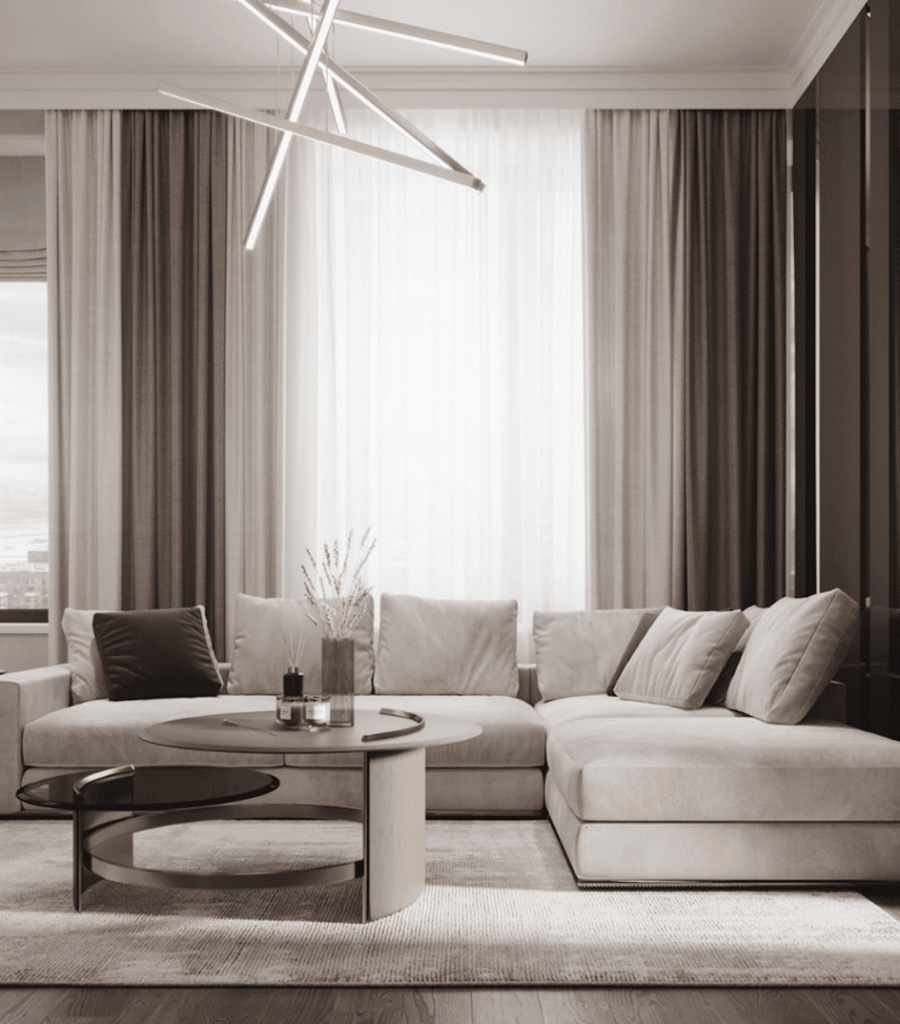Curtains are the most popular window treatment choice for many homeowners. Soft and elegant fabrics can give an immediate upgrade to any living space. There are many benefits associated with using curtains. For a start, they can make your ceiling look higher and give your room a dressy feel.
Not only that, but they also provide light control and privacy for the room. However, you must hang your curtains the right way to get the best of their functional and aesthetic value. In this post, we will look at the important do’s and don’ts of shopping and finding the perfect custom curtains for your space.
Do’s of Finding the Perfect Curtains
Are you ready to choose the perfect drapes that offer light control, privacy, and the perfect blend for your interior décor style? Here are important do’s that you should consider.
The Right Length and Width
There are many factors to consider while determining the length of your draperies. Ideally, your curtain should fall at floor-length or sill-length. Floor-length drapes can either puddle on the floor or just graze it. They can also stand about an inch above your floor. Sill-length, on the other hand, can extend to about six inches below the window sill or gently brush the sill. For the width, you have to consider the pleats and folds.
The beauty of curtains is in the pleats. Therefore, make sure that the width of the curtain stitches is double, or at least one-and-a-half size of the width of your window. If you have something less than this, the curtain will not have full pleats when closed.
Measure for Light Control
Drapes offer light control but if the curtains do not extend enough to the sides, the light will leak in from the side gaps. To avoid this, make sure that the drapes extend to about six inches on both sides of your window frame.
This will provide stacking for the panels when they are open. With the right stacking, your windows will have adequate air passage and light when you need them and shut them out when you do not.
Use Lining
Regardless of whether you’ve opted for curtains or custom roman shades, the lining behind your window treatments contributes to their fullness, elegance, and rich look. Lining guarantees fuller pleats and gentle sway that we all love about curtains. It also protects the curtain from direct sunlight, thereby preventing it from fading. Additionally, the lining offers more insulation from cold and heat.
You should never hang your drapes without lining, except if you are choosing sheers. If you are shopping for curtains for your bedroom, nursery, or home theater, consider blackout lining. That is because blackout drapes ensure sound insulation and room darkening. They also prevent the loss of thermal energy to about 25-30% in the room. That means you can have cooler summers and warmer winters.
The Right Heading Style
Think of your décor style when choosing the heading style for your drapes. Also, consider the usage frequency of the window. If you have a traditional décor, stitched-in styles, such as French pinch pleats will work perfectly. Modern interiors will look great with flat panels and stylish grommet top curtains.
You can consider heading styles with rod-pockets and back tabs for windows that you do not open regularly. For drapes that you open and close regularly, opt for styles that hang on clips or rings for easy movement.

Don’ts of Finding the Perfect Curtains
Don’t Compromise Privacy for the Bathrooms and Bedrooms
The primary function of curtains is privacy for your home. When choosing draperies for your bedroom and bathroom, you should never choose materials that will compromise this primary function. Choosing see-through fabrics for private spaces is a no-no. Therefore, you should never hang sheer draperies as the only curtains for your bathroom or bedroom.
Don’t Choose Fabrics with High Maintenance in High Usage Areas
Before selecting the fabrics for your curtains, evaluate your space and the usage pattern. You should not use heavy-duty fabrics like velvet and silks for the kids’ rooms, kitchen, and bathrooms. They should also not be used in dusty and humid areas. It is important to consider the required maintenance before you choose your curtains’ material, in light of the function and usage of the room.
Don’t Hang Curtains Straight out of the Box
You should arrange the drapes before hanging them. First, iron them and gently fold the curtains at the pleats. Then, tie them loosely with string or ribbon at three to four positions along the length of your drapes. Next, hang them on the pole and leave them as it is for two weeks.
The pleats will come out well-rounded and the curtains will not flare at the bottom when you untie them. You can use steam iron instead of a regular iron to get a faster result.
Conclusion
Curtains add beauty and elegance to any space. However, you need to get the techniques right to achieve the best result. This post looks at the important do’s and don’ts of finding the perfect curtains for your home. So don’t forget to follow the tips highlighted above when shopping for your next curtains!


